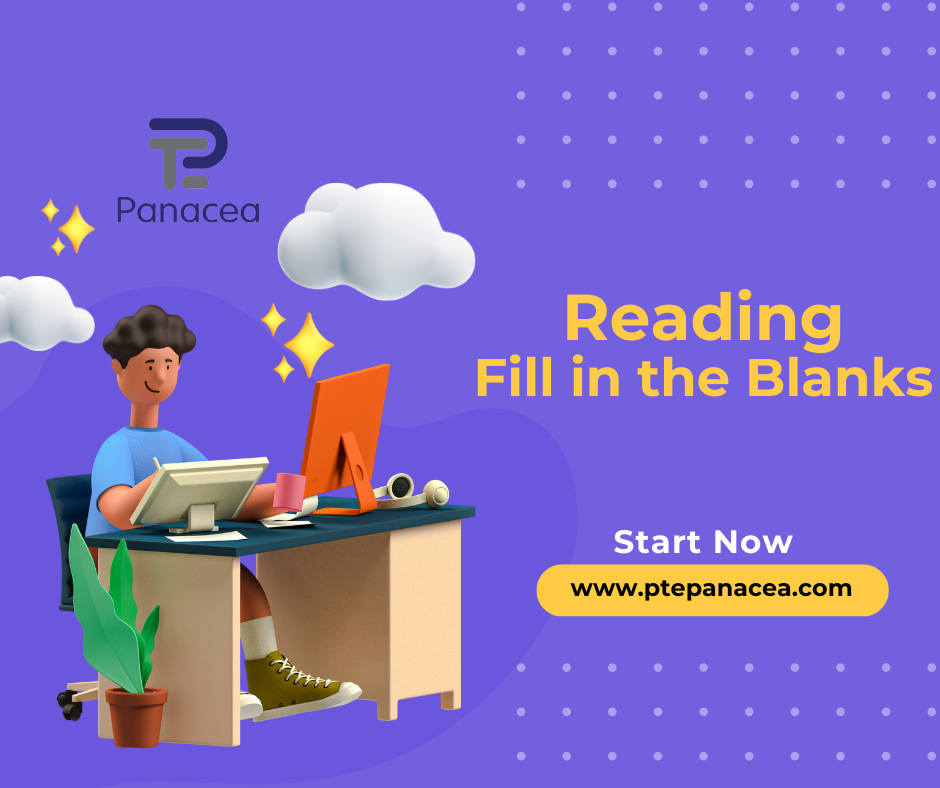Reading: Fill in the Blanks is the fourth question type of Reading Module. It is the second most important question type in Reading module and it contributes scores only to Reading Skills. In this question type the given paragraph is with some missing words and options are given below the paragraph. Select the option which you think is the appropriate one and drag it to the gap in the text above in the paragraph. There will be 4-5 questions of Reading: Fill in the Blanks.
Task Format
- Prompt Length: Text up to 80 words
- Skills Assessed: Reading
- Time To Answer: Not Applicable (Overall up to 30 minutes are provided to the Reading Task)
- Skills Profile: Single Skill Comprehension
- No. of Tasks: 4-5
.png)
Scoring Pattern of Reading: Fill in the Blanks
The score of Reading: Fill in the Blanks is added to Reading modules only. Each correct answer carries one point, the partial credits are provided, there is no negative marking.
How subskills are tested?
Reading:
First of all, identify the given topic, theme or main ideas of the passage by skimming the whole paragraph and identifying the words and phrases appropriate to the context which means
- Knowledge of academic vocabulary is required
- differentiate between the hidden and direct meaning of the word
- try to guess or conclude the meaning of unfamiliar words
- try to capture the clear and unclear both information from the given text
- grasping absolute and intellectual knowledge such as concrete knowledge involves the description of everyday and tangible objects or involves mental process.
How to Answer Reading: Fill in the Blanks?
- Skim the entire text including the gaps for the overall meaning of the paragraph. This will give you the idea on the topic the passage is based upon. Then, look for the keywords which creates meaning in the context.
- Examine the sentence to decide what is the requirement. Use the grammar clues to identify the possible solution for the given blanks.
- Collocations help to choose the right option, think of the word often appears with the word before or after the blank, pairing of words gives an idea which word is to be selected.
- Once one blank is filled go to the next one, after choosing the blanks of each gap, read the entire passage, if it seems to be right then move to the NEXT question.
STRATEGIES TO FOLLOW:
- Improve Reading Skills: Read short paragraphs and summarize the main ideas of the text. While reading the text, do not miss the sentence structure and try to analyze the verb tense patterns.
- Revising Grammar. Revise grammar once before you start practicing Reading: Fill in the blanks and try to solve few exercises based on the grammar.
- Enhance Vocabulary: Read the passages on different topics given in the newspaper, journals, magazines and on internet. Check the meaning and synonyms online or in the dictionary on the different topics which you encounter while reading.
- Be familiar with Collocations. Expand your knowledge of collocations, underline the collocations while you read any text the newspaper, journals, magazines or on internet. Try to understand the paring of the words, it will make your task easy.
- Discourse Structure: pay attention on discourse structure of the given passage and notice how the writer uses cohesive devices such as conjunction, repetition of words and phrases, synonyms and antonyms.
TEST TIPS
- Time management is important as there are 4-5 passages of Reading: FIB. Try to spend 1.5 to 2 minutes on each passage.
- Skim the passage to have a quick idea of the paragraph.
- Apply your knowledge of Grammar.
- Think of collocations whereas the choice seems to be difficult.
- Look for the clues related to the given text such as the root words, synonyms, antonyms and transition words.
- Practice the task as much as you can.


